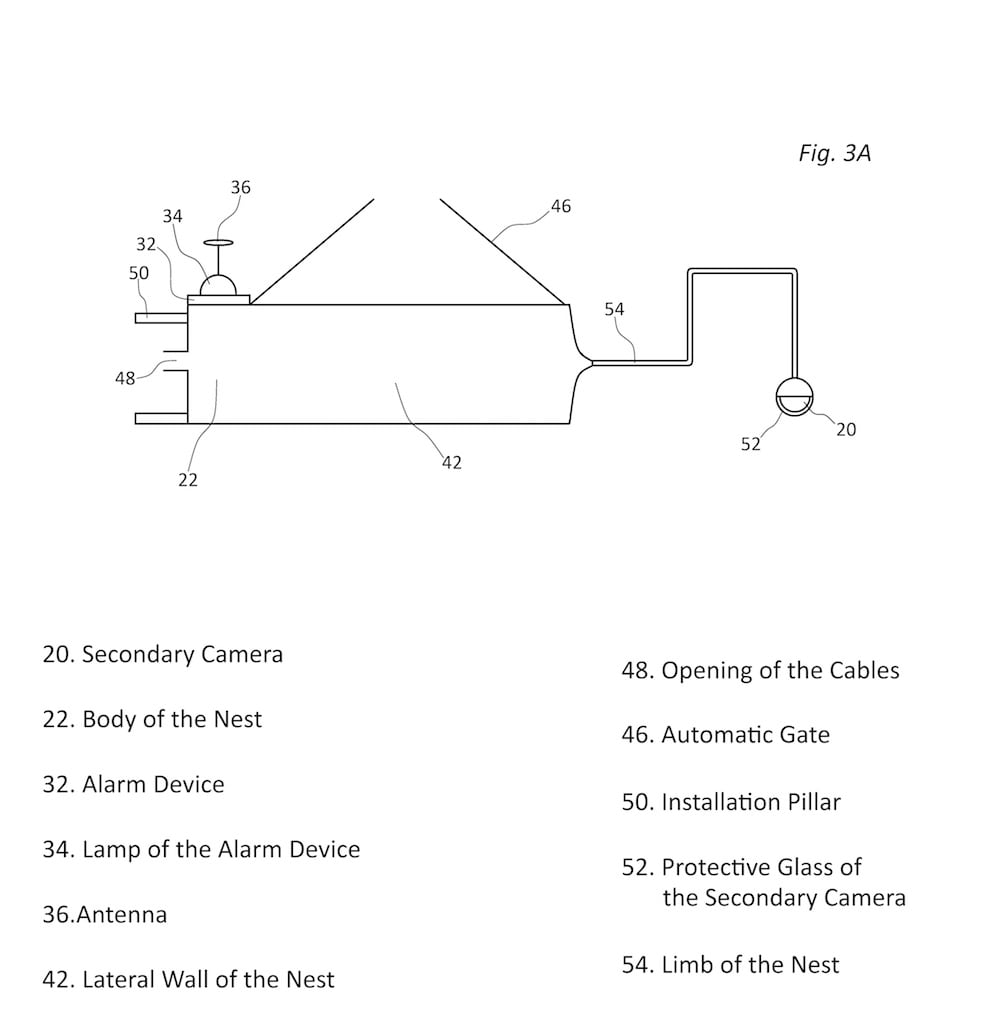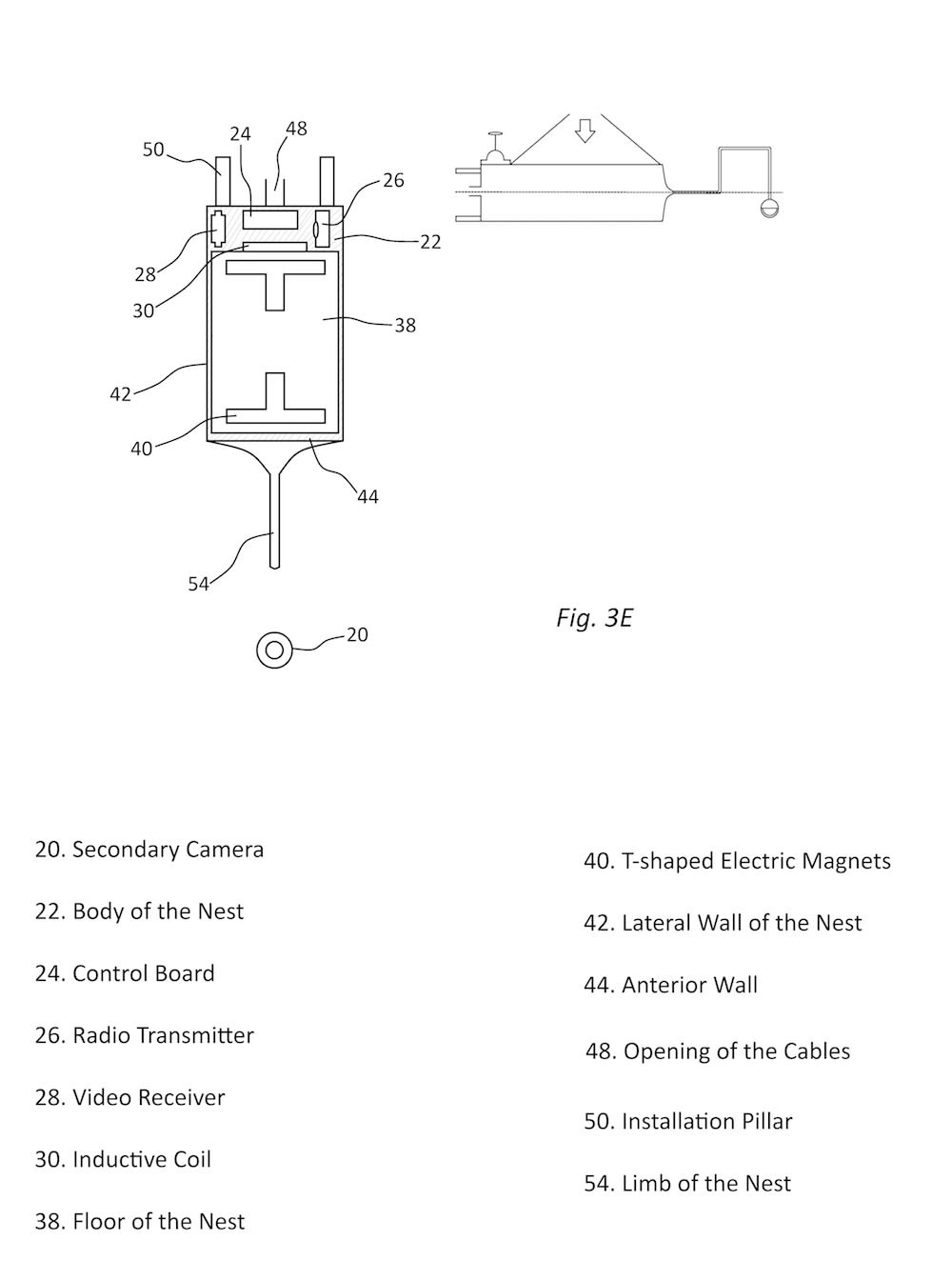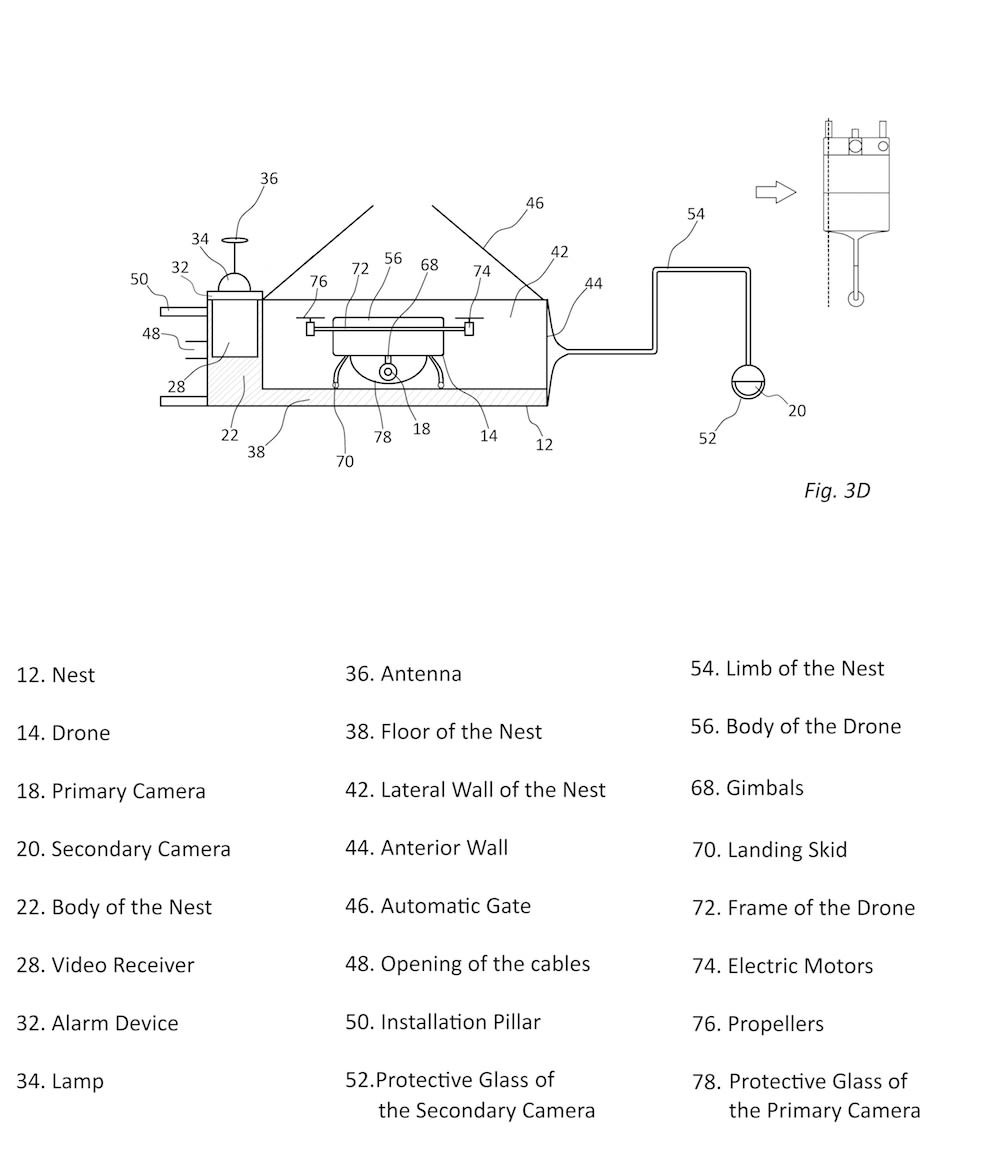A surveillance device comprises a nest holding a secondary camera, and a drone holding a primary camera. Both cameras provide the operator with real time video or photos. While the secondary camera surveys the local field in which the nest is installed, the drone can be activated to survey a wider field or follow up certain events or persons using the primary camera.
The nest incubates the drone helping it maintain functionality by supplying power, control orders and data stream transfer. The nest is a moderator between the drone and the operator. The surveillance functionality of the device can be divided into passive surveillance and active surveillance. During the passive surveillance; the drone is incubated within the nest, receiving inductive power supply to recharge its batteries. The secondary camera of the nest performs passive real time surveillance of the local field in which the device is installed.
The active surveillance can be stimulated and controlled by the operator using the nest as a relay point, or independently in a routine operator-free process according to a pre-saved protocol on the control board. During this stage; the control board opens the gate of the nest and turns the drone on. The drone flies away and receives control orders which are sent using the radio transmitter of the nest, which sends data to the radio receiver of the drone. The drone performs routine flying, or follows up certain objects which were defined as targets by the operator or installed software. The primary camera of the drone provides the operator with real time video and photos of the target. The data stream transmission is maintained using the video transmitter of the drone and the video receiver of the nest. The active stage is terminated upon direct order of the operator, or when a routine fly comes to an end. The drone returns back by an autopilot navigation system to be re-incubated within the nest and to restart the passive stage.
The device is novel as it has a functional synergism by combining a drone-dependent surveillance process, and another nest-dependent one. Additionally; the nest helps maintain the drone-dependent surveillance leading to a functional flexibility and sustainability.
Accordingly; the device can be used to protect:
1. Borders: in which an incorporated network of multiple devices is used. Within this network, the nests not only perform a passive surveillance of the targeted local fields, but also are used as fixed relay stations and connecting links between the drones and the operator. The drone can survey wider fields and follow up certain targets, which can’t be achieved by using ordinary cameras or maintained using regular drones.
2. Isolated large facilities and strategic areas as military bases and oil and gas fields, especially in troubled areas: the routine or operator-dependent active surveillance provides the operator with an insight on the ambushed dangers before they reach the local field, which also can’t be achieved by using ordinary cameras or maintained using regular drones.
Like this entry?
-
About the Entrant
- Name:Eslam Abbas
- Type of entry:individual
- Patent status:pending








